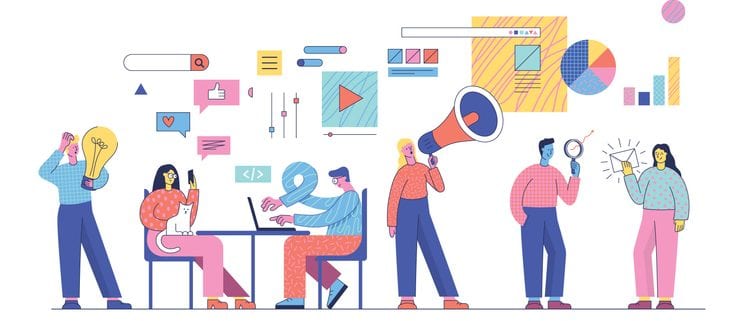
Traditional Marketing vs. Digital Marketing
No matter how big your business might be, whether it’s a small mom and pop store tucked away in a small town or a large corporation, advertising is an absolutely vital component of your success. If you do not invest in marketing your business, you’re unlikely to be able to spread any brand awareness. Not only will this make it difficult to grow your business, it will make it extremely difficult to keep it alive. When it comes to marketing your brand, you’re going to find that you have two main options–traditional marketing and digital marketing. The following is a breakdown of traditional marketing vs digital marketing.
Traditional Marketing vs. Digital Marketing
Before getting into the pros and cons of traditional marketing vs digital marketing, it’s important to understand how they differ in terms of strategy. Traditional marketing is about placing advertisements in places where your audience will have no chance of missing it. For example, TV ads, radio ads, magazine ads, newspaper ads, and billboards are all forms of traditional marketing. The idea is to put your brand at the top of mind of whoever sees your ad. Digital marketing is a bit different. It refers to the use of digital channels to market to consumers. For example, both online marketing and mobile marketing are forms of digital marketing. The following is a comparison/difference between traditional marketing and digital marketing to give you a better understanding of how both strategies work:
The marketing costs
Traditional advertising methods, such as creating videos and running them on TV or running print ads in the newspaper, tend to be relatively expensive. It’s going to be even more expensive when taking into account where you run it and when you run it. For example, a commercial that runs during prime time hours during a popular show is going to be more expensive than being shown on a local channel after midnight.
Digital marketing can get expensive as well. For example, posting video content on YouTube still requires that you produce that content–and while you can continuously run the same commercial for a while on TV, video content tends to have a shorter lifespan in the digital realm due to the need to continuously produce new content to keep drawing more traffic. One advantage that digital marketing does have is that it allows you to target more specific audiences, which means that if you’re targeting a specific niche, it could potentially be more cost-effective.
Reaching your audience
While traditional marketing allows you to reach a general audience, digital marketing makes it easier to reach your specific buyer persona. For example, you can use PPC advertising to specifically target potential customers who are searching for specific products that they want to buy. Due to the way PPC ads work in conjunction with keywords, the people that see your ad are all likely to be part of your target audience. With traditional marketing, it’s a bit more of a shot in the dark. While some consumers who are part of your target audience may be watching a certain channel when you run your commercial, many of those viewers may not be–and even if they are, they may not have a need or interest in your product.

Engaging the audience
One of digital marketing’s biggest advantages is that you can engage more directly with your audience. Audiences can interact with your content through social sharing and commenting, and you can engage directly with your audience for valuable feedback. Traditional marketing is a one-way street. You provide your message and your audience has no way to respond or interact.
Long-term vs Short-term
Once you stop running a commercial or a print ad, it’s over. This makes traditional marketing a short-term strategy. With digital marketing, your marketing efforts will live forever online. The content you created years ago can still be relevant and help bring in leads. This makes digital marketing a more effective long-term strategy.
As you can see, when comparing traditional marketing vs digital marketing, digital marketing has its share of advantages. But that’s not to say traditional marketing doesn’t work. In fact, many brands will combine the use of traditional marketing and digital marketing to great success. This is known as an omnichannel approach, and it’s an approach you should consider implementing as well.

The landscape of the Internet is ever changing and Nicole has the energy and aptitude to keep Stevens & Tate Marketing out in front of the pack. She leads an enthusiastic team in strategic planning, development, search engine marketing, online promotions and advertising for the web.





